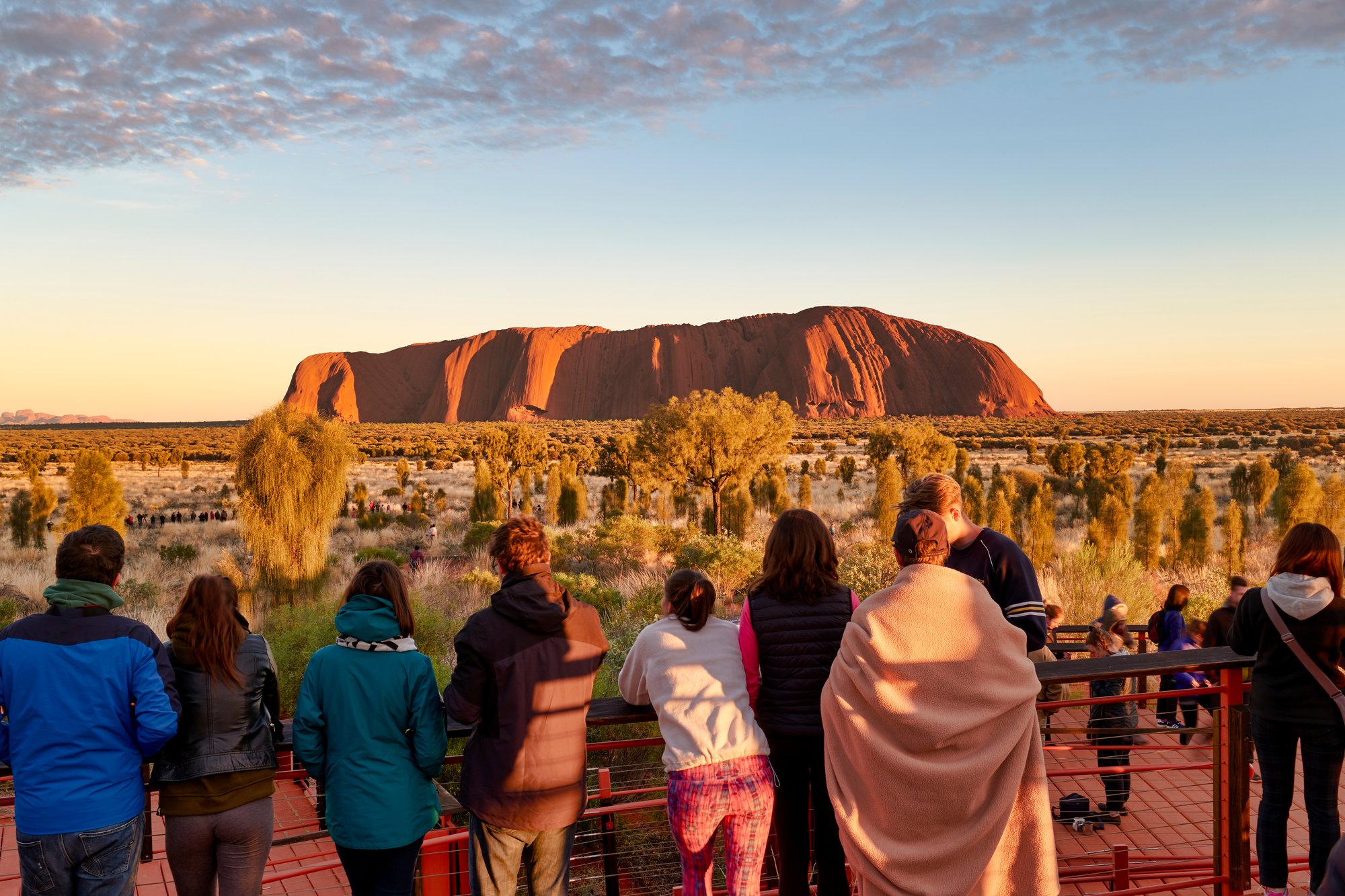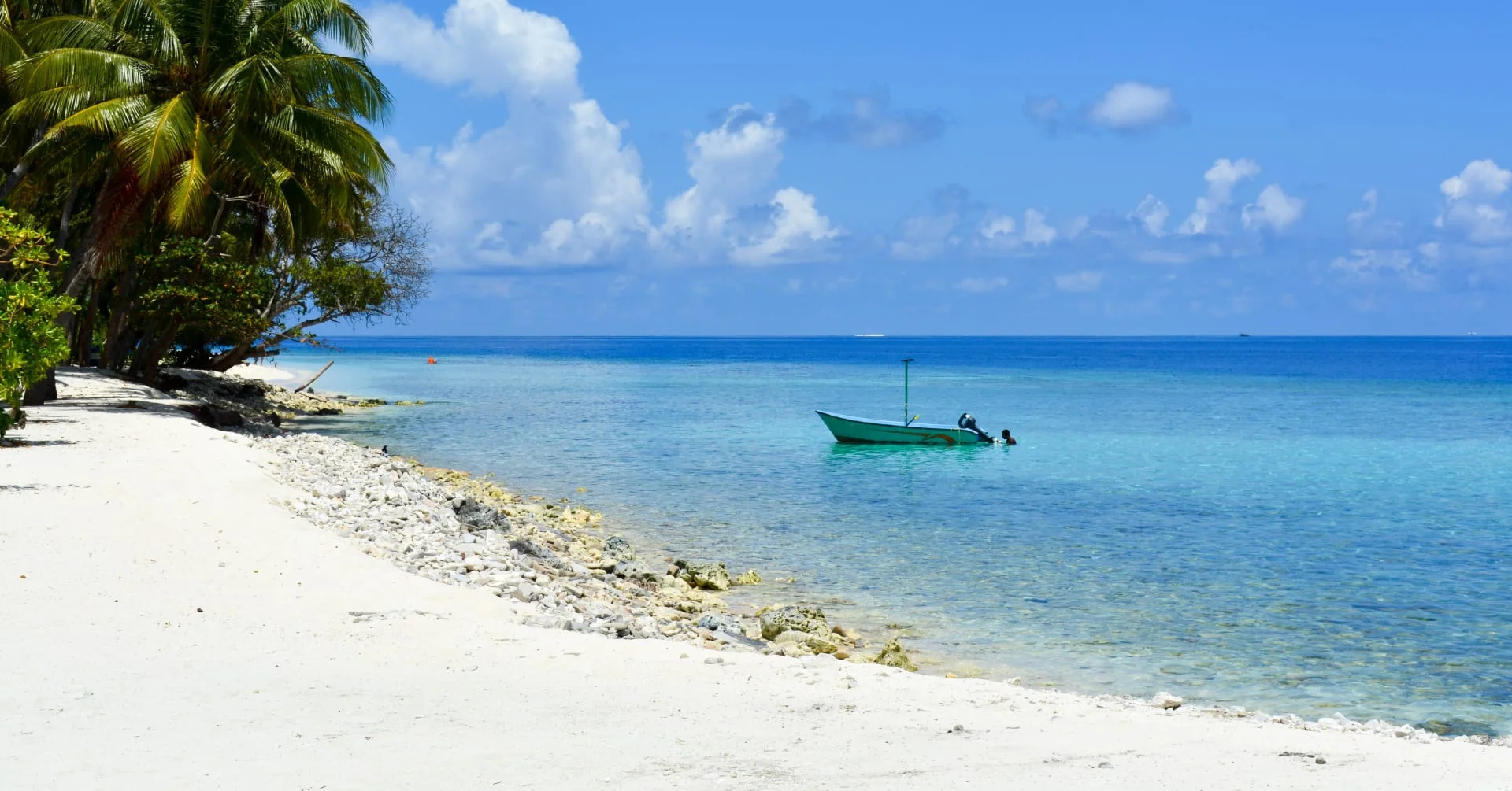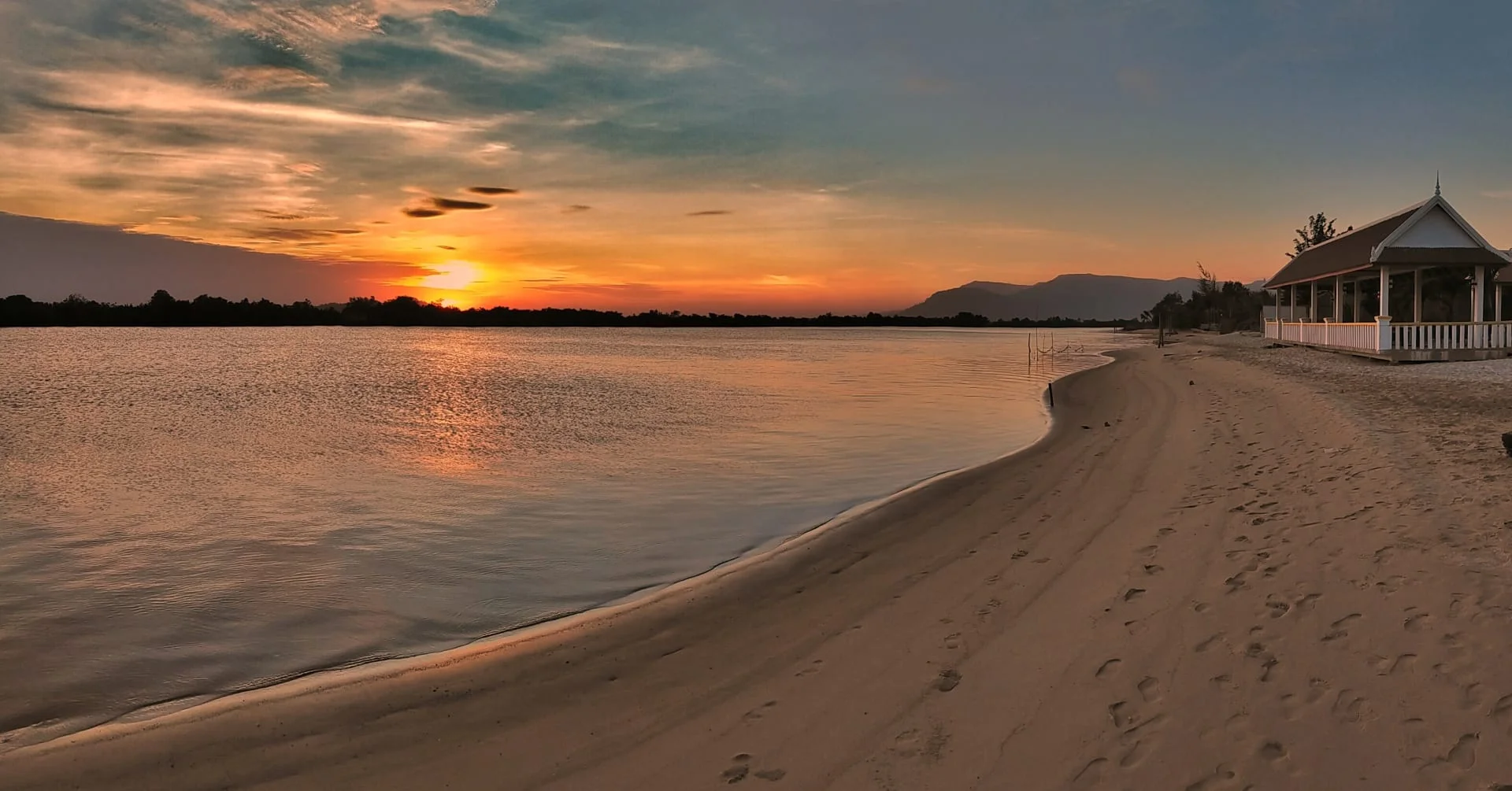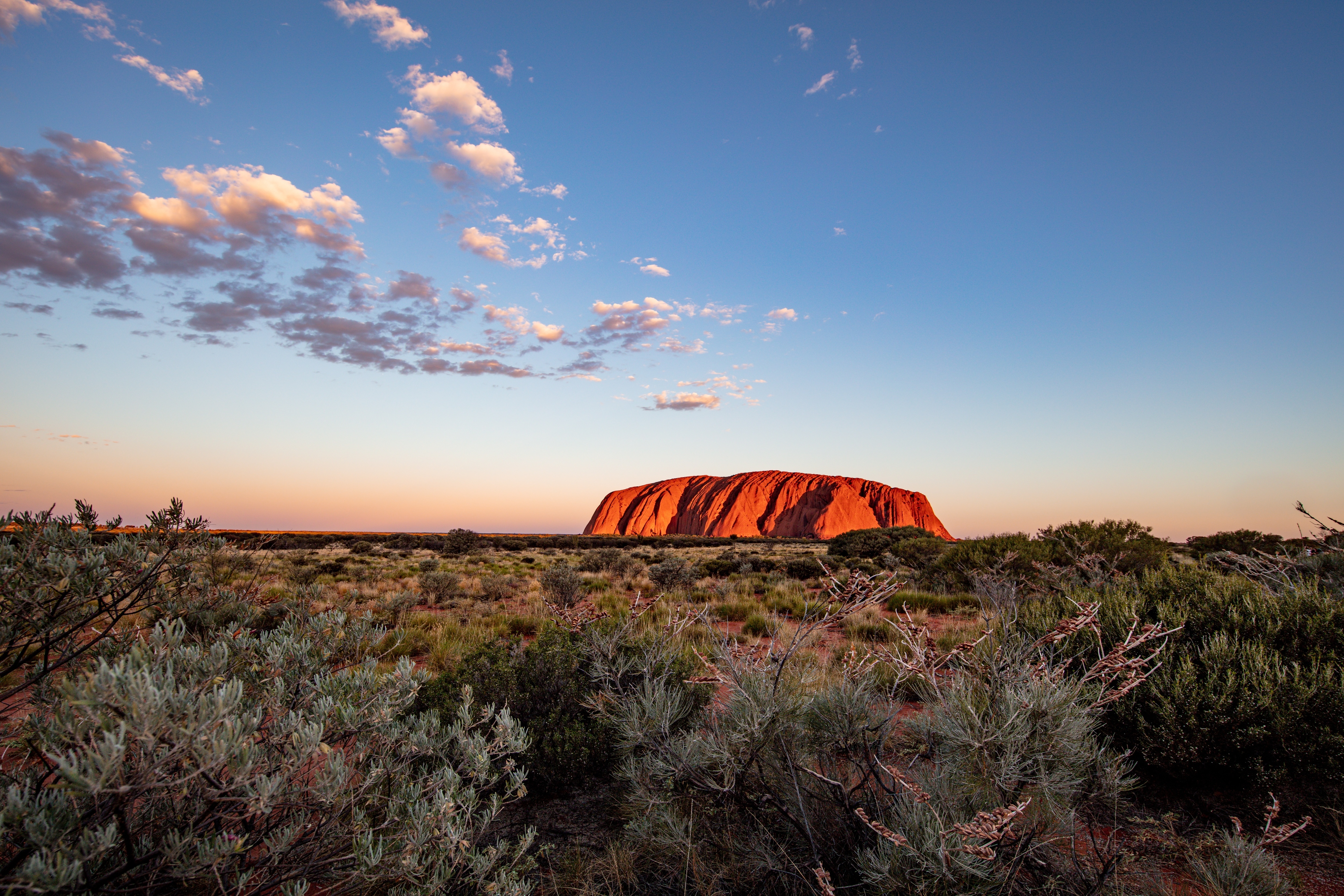Experience the iconic Uluru Rock, located in the heart of Australia's Northern Territory

Rising 348 meters above the surrounding desert plains, this massive formation is one of the country's most recognisable natural landmarks. Uluru is not only impressive for its size, but also for its striking appearance, as its colours seem to change dramatically with the shifting light, ranging from ochre to burnished orange and intense red, especially during sunrise and sunset.
The rock holds immense cultural and spiritual significance for the local Aboriginal people, known as the Anangu, who have inhabited the area for at least 20,000 years. The Anangu consider Uluru sacred and believe they are direct descendants of those who created the distinct features of the desert landscape. In recognition of its cultural importance, Uluru was officially returned to the Anangu people in 1985, though it is now jointly managed with the Australian government as part of the Uluru-Kata Tjuta National Park.
Uluru is a popular tourist destination, offering a range of experiences for tourists. Visitors can explore the area through various walks around the rock, including the 10.6-kilometer base walk that circles the entire monolith. The park also offers opportunities to learn about Aboriginal culture, view ancient rock art, and witness the breath-taking changes in Uluru's appearance during sunrise and sunset. Beyond its natural beauty, Uluru serves as a powerful symbol of Australia's indigenous heritage and the ongoing journey towards reconciliation and cultural understanding.
The best time to visit Uluru Rock
The best time to visit Uluru is from May to September, when the weather is much more comfortable for outdoor activities and exploration. During these months, daytime temperatures are generally mild, ranging from 18°C to 26°C (64°F to 79°F), making it ideal for hiking and enjoying the breath-taking scenery of Uluru-Kata Tjuta National Park. The cooler weather also enhances the vibrant colours of Uluru, allowing visitors to fully appreciate the stunning sunrises and sunsets that transform the rock into shades of ochre, orange, and deep red. This period is particularly popular with tourists, so planning your visit during the shoulder months of May or September can help you avoid the larger crowds while still enjoying pleasant conditions.
The summer months from December to February can be extremely hot and humid, with temperatures often soaring above 35°C (95°F), making outdoor activities challenging and uncomfortable. While some visitors may appreciate the quieter crowds during this time, it is essential to be prepared for the harsh conditions if you choose to visit in the summer.
WEATHER CHART:
- Excellent
- GOOD
- POOR
Need to chat?
Find out more and tailor your perfect trip with the help of our specialist team
Enquire OnlineMore travel inspiration from Wayfairer customers and travel specialists

Top 10 Best Maldives Islands to Visit Now
December 08, 2023

6 Exciting Things to do in Bora Bora
June 06, 2024

8 Luxury Winter Sun Holidays to Visit Now
November 29, 2023

Sign up to our newsletter
For more travel inspiration delivered straight to your inbox just fill in your details here

Start planning your luxury Uluru Rock tour today
We're looking forward to hearing from you







